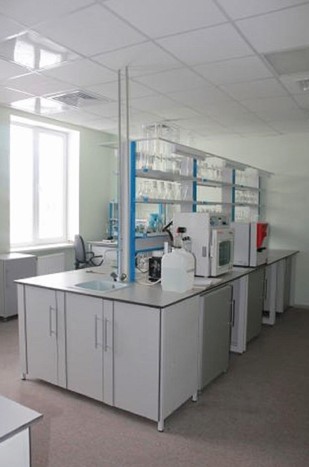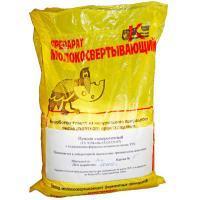Is it possible to grow soybeans in Belarus and make money from it? Experts were asked
At the 2024 Dozhinki in Polotsk, President ALEXANDER LUKASHENKO called on farmers to grow soybeans more actively. "We spend hundreds of millions of dollars on purchasing these feeds - we buy a huge amount of soybeans from abroad. Why don't we grow them here?" the HEAD of state asked, citing an experiment in the Vitebsk region as an example. There, the yield on the first hundred hectares was 30 c/ha. We asked experts: why is soy important for us and what are the prospects for this crop in our country? The record holder for protein content - Soy is very important for animal husbandry: to prepare high-quality feed, soybean meals rich in protein are required. Proteins of rapeseed meal, which are sufficient in Belarus, will not replace soybeans in animal diets, since rapeseed cake and meal are not suitable for feeding all groups of animals and, in addition, rapeseed protein is used not instead of soybean, but together with it, - noted the head of the laboratory of the Polesie Institute of Plant Growing of the RUE "SPC of the NAS of Belarus for Agriculture" Mikhail Korotkov and explained that soybeans are especially important for high-yielding herds, young animals, and in pig breeding. Soybeans cannot be replaced by peas and lupines, since they not only have a high protein content in the grain (up to 40-50%), but are also more balanced in amino acid composition than both of these crops. Soy protein contains more lysine - the most valuable amino acid. In addition, soybean grain contains over 30% carbohydrates and 18-27% oil, which has high nutritional qualities. It is not for nothing that large importers began to import soybean grain instead of soybean meal. - By pressing the oil , they recoup the logistics and the cost of the meal obtained locally, - explains Viktor Khaletsky, Deputy DIRECTOR for Science at the Brest Regional Agricultural Experimental Station of the National Academy of Sciences of Belarus. - Previously, we purchased soybeans (mainly in the form of meal) in various markets, including Argentina. Now we are more focused on Russian producers. For example, a year ago Belarus agreed on supplies from the Amur Region. The Far East is considered the birthplace of soybeans , although today it is grown throughout the country. Moreover, the crop is cultivated on a huge scale, given the developed livestock sector. Increasing crops In Belarus, soybeans have been cultivated since the 2000s, but in very small quantities. Recently, the area under it has increased significantly. - If in 2020 soybeans occupied about 2.5 thousand hectares, then in 2024 - already 11.20 thousand hectares, - noted Mikhail Korotkov. Climate change also played a role. Soybeans are a very heat-loving short-day crop.
- If five years ago they said that soybeans would grow in the Vitebsk region, no one would have believed it, - says Mikhail Korotkov. - But now in the southern part of this region, farmers can sow varieties with a short growing season. True, in the second or third decade of May. In the central zone of the country - in the first or second decade of May. In the south - even at the end of April. At the same time, varieties with different growing seasons are used in the regions. Of course, there is a risk of frost everywhere even at the end of May.
Soybeans for grain can be grown in all districts of the Brest, Gomel and Mogilev regions and only in 14 districts of the Grodno region and 19 districts of the MINSK region. In the northern part of the Grodno and Minsk regions and the entire Vitebsk region, with the exception of the southern part, soybean cultivation is currently possible for green mass, but obtaining consistently high grain yields is still difficult.
On average, soybeans in the country demonstrate a yield of 15 c/ha.
The variety is the head of everything
In Belarus, 32 varieties of soybeans are registered, 14 of which are domestically bred.
- These varieties ripen, because they are well adapted to our conditions and produce an economically viable harvest. According to calculations by the Center for Strategic Research of the National Academy of Sciences of Belarus, the profitability of soybean production starts at 15-17 c/ha, - notes Viktor Khaletsky.
For example, in 2024 , the Vasilisa variety, created by scientists and specialists of the Institute of Genetics and Cytology of the National Academy of Sciences of Belarus, was added to the register.
- According to reviews from those who have worked with it, it is quite early maturing and has a high yield potential, - this is how Viktor Khaletsky assesses the prospects of Vasilisa.
In addition, the institute previously created two more varieties - Ptich and Pushchanskaya. The authors of Vilia were the Institute of Genetics and Cytology of the National Academy of Sciences of Belarus and the Republican Station of Young Naturalists. The development of "Stviga", "Yaselda" and "Pripyat" belongs to OOO "Soya-Sever", created at the Institute of Genetics and Cytology of the National Academy of Sciences of Belarus. By the way, the latter variety turned out to be the most widespread in the post-Soviet space.
Two years ago, the Polesie Institute of Plant Growing submitted two more new soybean varieties for testing - "Ayolanta" and "Malanka". Their uniqueness lies in the fact that both are ideal for the production of green fodder and balancing fodder with protein when preparing silage.
- Corn-soy silage, compared to corn, can increase the MILK yield of cows by 1-2 kg per day, the fat content in milk - by 0.2%, protein - by 0.5%, - emphasizes Mikhail Korotkov.
Realities and Prospects
Experts believe that soybeans have good prospects in our country. Provided that agricultural technologies are followed, the field is chosen correctly (it cannot be sown on acidic soils), farms can obtain a yield of at least 20 c/ha.
- Where fields for soybeans are prepared in the fall, and the land for this crop is not given over to the residual principle, the yield in 2024 was up to 30 c/ha and higher, - emphasizes Viktor Khaletsky. - The crop is quite profitable.
A number of leading farms in the country have seen this for themselves, having planted the best plots with soybeans.
- Previously, only purchased soybeans were used to make up the cattle ration, but now we use our own, which we have been growing for three years already, - said Alexey Romanyuk, director of the Bubny agricultural production branch of the MINGAZ PRUP. - We appreciated the high potential and benefit of this crop, having increased the sowing last year to 150 hectares, that is, by 2 times, having completely abandoned spring grains. We received a harvest of more than 30 c/ha per circle, having collected a total of 550 tons. Today, by extruding the grain, we get soybean meal, which we send for our own consumption - for dairy and fresh cows and calves. The oil is in demand for the preparation of compound feed in poultry and pig farming.
Focus on cooperation
- How to increase soybean production in the country if arable land is limited? - we ask scientists a reasonable question.
- It is necessary to revise the structure of areas. Then there will be room for a variety of crops, including soybeans, - believes Mikhail Korotkov.
There is no doubt that Belarus will soon have a number of new varieties with even greater potential. At the same time, Belarusian science is not limited to itself. Breeders are counting on international cooperation.
- We gave our Russian colleagues Belarusian seeds for hybridization (crossbreeding) with their varieties, which have a very high productivity potential. In addition, the All-Russian Soybean Institute gave us several early-ripening varieties, which ripened this year at the same time as the Belarusian ones. And although it is difficult to judge by one year, one or two varieties may be suitable for our climate, - Viktor Khaletsky said at the end of the conversation.
Tamara MARKINA,
Photo - Alexander KHITROV, heroes of the publication, and from the archive of the BELTA
newspaper "7 days".
- If five years ago they said that soybeans would grow in the Vitebsk region, no one would have believed it, - says Mikhail Korotkov. - But now in the southern part of this region, farmers can sow varieties with a short growing season. True, in the second or third decade of May. In the central zone of the country - in the first or second decade of May. In the south - even at the end of April. At the same time, varieties with different growing seasons are used in the regions. Of course, there is a risk of frost everywhere even at the end of May.
Soybeans for grain can be grown in all districts of the Brest, Gomel and Mogilev regions and only in 14 districts of the Grodno region and 19 districts of the MINSK region. In the northern part of the Grodno and Minsk regions and the entire Vitebsk region, with the exception of the southern part, soybean cultivation is currently possible for green mass, but obtaining consistently high grain yields is still difficult.
On average, soybeans in the country demonstrate a yield of 15 c/ha.
The variety is the head of everything
In Belarus, 32 varieties of soybeans are registered, 14 of which are domestically bred.
- These varieties ripen, because they are well adapted to our conditions and produce an economically viable harvest. According to calculations by the Center for Strategic Research of the National Academy of Sciences of Belarus, the profitability of soybean production starts at 15-17 c/ha, - notes Viktor Khaletsky.
For example, in 2024 , the Vasilisa variety, created by scientists and specialists of the Institute of Genetics and Cytology of the National Academy of Sciences of Belarus, was added to the register.
- According to reviews from those who have worked with it, it is quite early maturing and has a high yield potential, - this is how Viktor Khaletsky assesses the prospects of Vasilisa.
In addition, the institute previously created two more varieties - Ptich and Pushchanskaya. The authors of Vilia were the Institute of Genetics and Cytology of the National Academy of Sciences of Belarus and the Republican Station of Young Naturalists. The development of "Stviga", "Yaselda" and "Pripyat" belongs to OOO "Soya-Sever", created at the Institute of Genetics and Cytology of the National Academy of Sciences of Belarus. By the way, the latter variety turned out to be the most widespread in the post-Soviet space.
Two years ago, the Polesie Institute of Plant Growing submitted two more new soybean varieties for testing - "Ayolanta" and "Malanka". Their uniqueness lies in the fact that both are ideal for the production of green fodder and balancing fodder with protein when preparing silage.
- Corn-soy silage, compared to corn, can increase the MILK yield of cows by 1-2 kg per day, the fat content in milk - by 0.2%, protein - by 0.5%, - emphasizes Mikhail Korotkov.
Realities and Prospects
Experts believe that soybeans have good prospects in our country. Provided that agricultural technologies are followed, the field is chosen correctly (it cannot be sown on acidic soils), farms can obtain a yield of at least 20 c/ha.
- Where fields for soybeans are prepared in the fall, and the land for this crop is not given over to the residual principle, the yield in 2024 was up to 30 c/ha and higher, - emphasizes Viktor Khaletsky. - The crop is quite profitable.
A number of leading farms in the country have seen this for themselves, having planted the best plots with soybeans.
- Previously, only purchased soybeans were used to make up the cattle ration, but now we use our own, which we have been growing for three years already, - said Alexey Romanyuk, director of the Bubny agricultural production branch of the MINGAZ PRUP. - We appreciated the high potential and benefit of this crop, having increased the sowing last year to 150 hectares, that is, by 2 times, having completely abandoned spring grains. We received a harvest of more than 30 c/ha per circle, having collected a total of 550 tons. Today, by extruding the grain, we get soybean meal, which we send for our own consumption - for dairy and fresh cows and calves. The oil is in demand for the preparation of compound feed in poultry and pig farming.
Focus on cooperation
- How to increase soybean production in the country if arable land is limited? - we ask scientists a reasonable question.
- It is necessary to revise the structure of areas. Then there will be room for a variety of crops, including soybeans, - believes Mikhail Korotkov.
There is no doubt that Belarus will soon have a number of new varieties with even greater potential. At the same time, Belarusian science is not limited to itself. Breeders are counting on international cooperation.
- We gave our Russian colleagues Belarusian seeds for hybridization (crossbreeding) with their varieties, which have a very high productivity potential. In addition, the All-Russian Soybean Institute gave us several early-ripening varieties, which ripened this year at the same time as the Belarusian ones. And although it is difficult to judge by one year, one or two varieties may be suitable for our climate, - Viktor Khaletsky said at the end of the conversation.
Tamara MARKINA,
Photo - Alexander KHITROV, heroes of the publication, and from the archive of the BELTA
newspaper "7 days".



























































